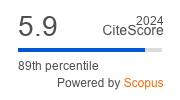Article | Open Access
Digital Rights, Institutionalised Youths, and Contexts of Inequalities
| Views: | 2953 | | | Downloads: | 1671 |
Abstract: In this article, we aim to discuss digital rights and media literacy in the context of socio-digital inequalities experienced by institutionalised youths. In the case of these digitally disconnected youths in detention centres, there is evidence of multiple life-course disadvantages that will resonate throughout their future lives. They see their present and future lives deeply challenged by the fast pace of technological innovation and its social impacts while living in environments that we see as digital deserts. The data we bring to the discussion results from the Portuguese participatory project DiCi-Educa. We worked for three years with institutionalised youth on digital media production and critical thinking regarding digital citizenship, participation, and otherness issues. This article is organised around two research questions: What were youths’ practices regarding media and digital environments before institutionalisation? How did they discuss these digital environments and their digital rights during the project? Early findings point to (a) the importance of implementing critical methods to help them to think about technologies in diverse daily life contexts, (b) the need to provide venues for institutionalised youth to build critical thinking and communication skills, and (c) the necessity to widen their worldviews and promote positive behaviours.
Keywords: detention centres; DiCi-Educa; digital citizenship; digital disadvantage; digital disconnection; digital divide; digital rights; institutionalised youth; juvenile delinquency; youth-at-risk
Published:
© Maria José Brites, Teresa Sofia Castro. This is an open access article distributed under the terms of the Creative Commons Attribution 4.0 license (http://creativecommons.org/licenses/by/4.0), which permits any use, distribution, and reproduction of the work without further permission provided the original author(s) and source are credited.


